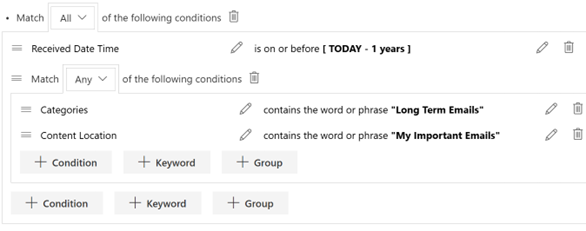We've already covered how using Collabspace document lifecycle workflows allows you to define, streamline, and gain insights for your organization's business processes. Today, we're showing you how to further speed up and simplify processes with workflow event triggers.
Use Case Scenario
While event triggers can be used in various business scenarios, let's focus on a specific example: an organization has a mandate that requires all drafts of large projects to be kept for 2 years once a project has been finalized.
Prior to event triggers, this would require either using creating a metadata column such as Close Date or Last Modified Date, and then selecting and applying that column to all draft items with a date calculation to signal that drafts should move into retention.
With Event Triggers, users can skip inputting dates into a Close Date column and apply a Closed Status column instead. Once a project has been completed, all that is required from users is to mark the Status as complete, and Collabspace will move the draft items into retention portion of the workflow for necessary the two years.
Event Trigger Capabilities
Event triggers can be accessed in the Workflow Designer, or the Events Template area. Here, designated users involved in the project can centrally manage all events for project items that they can attach for user triggered events and reviews.
The event (Retain for 2 years) can be created, or selected if it was already saved as an event template. Selecting the event for the workflow will signal that once the Close Status is checked, the project has been finalized and items should move into the retention step of the workflow for two years.
Once this event has been created, users can utilize Advanced Search to pull up their draft items, and select one, multiple, or all. In every search area of Collabspace, there is a Trigger Event button where users can select the retain event, and date it (past if the project was finalized already, future date if the project has yet to be completed) so that the items will move to the retention portion of the workflow.
Lastly, designated users will be notified within Collabspace once event triggering is completed. They will be able to see which draft items have moved into Retention, and whether there were any items that have not been triggered.
The Value
These event triggers provide flexibility and simplify the projects by giving owners a way to make the event portion in Collabspace workflows seamless and automated. Everything is streamlined because users can now trigger an event in a few clicks, select all, get notified, and see which items were affected. Prior, users would have to assigned in real time but now they can simply kick it off and go.
Does this sound valuable for you? Speak to our team to learn more about how your organization can take advantage of Collabspace workflow event triggers. This solution also has a lot of other great features, you can learn more about those below:
![]()





